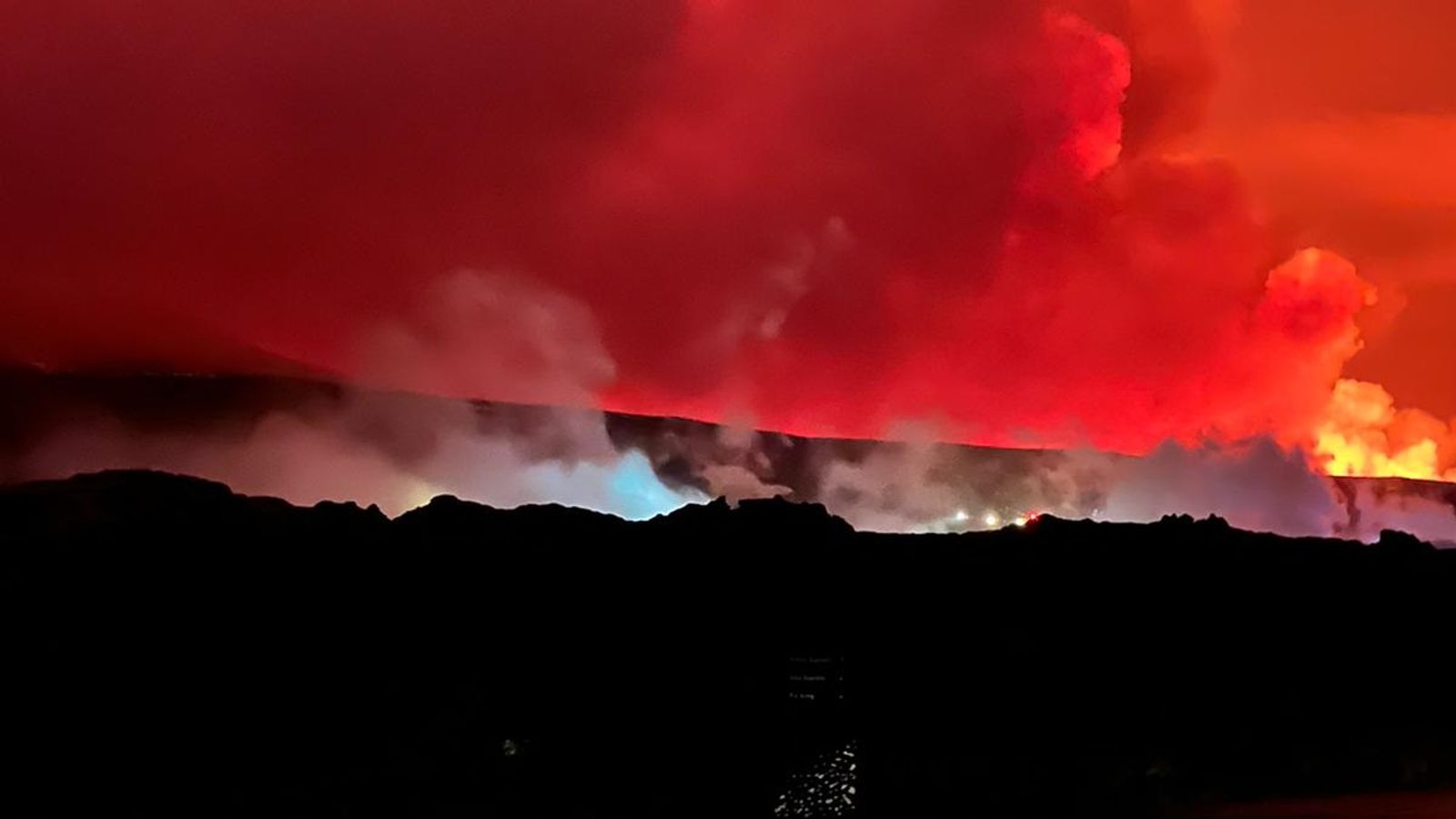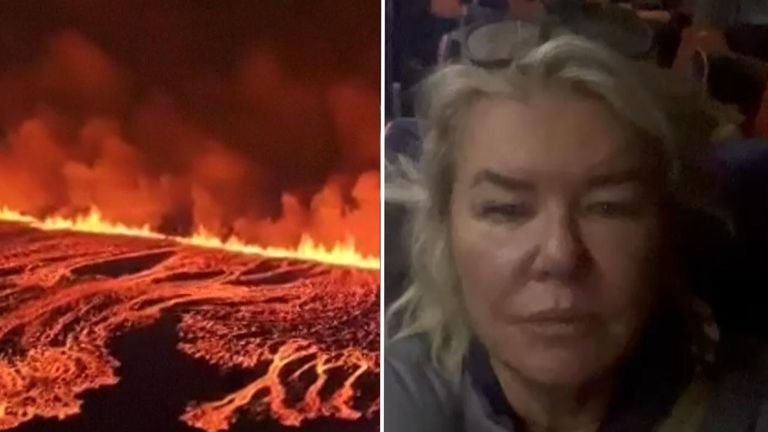The alarm came loud and long – piercing and insistent. And when I opened our hotel bedroom door seconds later, there were already hotel workers running down the corridor.
A window immediately opposite our room held the answer for the urgent reaction. It was filled with a huge orange glow of a mushroom cloud billowing into the skies.
If there’d been any doubt, it was dispelled in that moment. The volcano on the Reykjanes Peninsula had erupted again – and with force.
It looked like it was on the doorstep of our hotel. In fact, it was a few kilometres away, but my family and I were among the five to six hundred people in the area at the time.
An emergency evacuation plan immediately swung into operation to get us all out – and quickly.
Our family of six happened to be in Iceland for a five-day break to celebrate two significant family birthdays. They were originally planned and then postponed a week before the coronavirus pandemic forced a worldwide lockdown.
We’d only just re-arranged and had only been in Iceland for two nights when what’s looking like one of the most powerful recent eruptions occurred.
The Blue Lagoon area is one of Iceland’s most popular tourist attractions and the hotels here were almost full. The authorities say they’d warned for weeks of an imminent eruption.
Iceland’s Civil Protection Agency said before the eruption: “Since 24 October, scientists at the Icelandic Met Office have been monitoring a rise in seismic activity on the Reykjanes Peninsula which may signal an impending volcanic eruption.
“The heightened intensity of these seismic events particularly near the town of Grindavik indicates the potential for volcanic activity in the area.”
Read more from Sky News:
World’s largest election to start next month
Kim Jong Un rides in limousine gifted to him by Putin
If those warnings spelled imminent danger and the intensity of the eruption which happened on Saturday night, the hotel staff and the locals we’d spent the day with knew little about it. There was no indication at all that anything dramatic was about to happen.
The entrance to the Blue Lagoon area was still pitted with roadwork signs and warning notices cordoning off lava which was still smoking from the earlier eruptions.
We drove past the smoking rock formations just minutes before the latest eruption with our guide telling us about the fresh safety measures which had been enacted since last month.
Iceland had already seen three volcanic eruptions since December. But the fourth on Saturday night is thought to be the most powerful of recent times and is believed to be around the same location as February’s eruption.
That saw red-hot lava flow down dangerously close to the Blue Lagoon area and across the entrance roads. Since February, the authorities had carved a new road and built protective dykes around the lagoon which is famed for his restorative mineral properties.
All the guests had been given plans for possible evacuation before arriving. But I was speaking to hotel workers just a few minutes before the eruption about plans for the following day and no one in the hotel appeared to be aware of the seismic activity which very shortly ensued.
Text messages appeared on our mobile phones as the alarms went off, first in Icelandic then in English. “Evacuate, Evacuate. Leave the area immediately,” it read. “Call 112 if you need help EVACUATE EVACUATE.”
The car park was crowded with vehicles indicating a lot of visitors inside the lagoon area. Many of them were in the water when the eruption happened and were seen running through the hotel and back to their rooms in swimming costumes and dressing gowns to gather up their belongings.
In less than half an hour, all tourists had been rounded up and boarded on to a fleet of buses. Our family was the last to leave.
A few dozen residents of the nearby fishing village of Grindavik had only just returned to their homes. The town has been virtually a ghost area since being evacuated in November. They too received text messages urging them to leave the area.
Iceland is used to volcanic eruptions with more than thirty active volcanoes, making it the most active in Europe and attracting thousands of volcano tourists each year.
The most disruptive recently was in 2010 when the eruption of Eyjafjallajokull led to the widespread closure of airspace across Europe.



